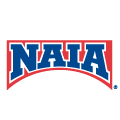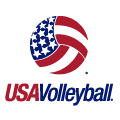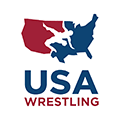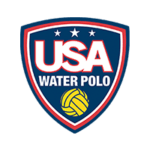National Signing Day and National Letter of Intent (NLI)


One of the most exciting moments for a student-athlete is receiving a verbal scholarship offer. Years of hard work have led to this moment. However, nothing is official until you sign the National Letter of Intent (NLI.) Not every school uses the NLI—about 650 NCAA D1 and D2 schools. It’s not mandatory to sign, but every year more than 48,000 student-athletes do. The National Letter of Intent is not affiliated directly with the NCAA; it was created by the Collegiate Commissioners Association to protect both the college and student from either party backing out.
Insider tip: NAIA and NJCAA have their own versions of the letter. If your student-athlete is attending school in one of those divisions, be sure to understand the nuances of those letter programs.
Quick Links
National Signing Day
For many sports, especially in Division I, National Signing Day has become a celebrated event. Technically, student-athletes do not need to sign their National Letters of Intent on the first day of the Signing Period, but many do.
When is National Signing Day?
National Signing Day is November 8, 2023 for all D1 and D2 sports outside of football or basketball, and the signing period continues through August 1, 2024.
Below are updated signing dates for each sport for student-athletes signing in 2023-2024 for 2024-2025 enrollment:
| Sport | Initial Signing Date | Final Signing Date |
|---|---|---|
| D1 Basketball (early period) | November 8, 2023 | November 15, 2023 |
| D1 Basketball (regular period) | April 17, 2024 | May 15, 2024 |
| D1 Football (early period) | December 20, 2023 | December 22, 2023 |
| D1 and D2 Football (mid-year JC transfer) | December 20, 2023 | January 15, 2024 |
| D1 and D2 Football (regular period) | February 7, 2024 | D1: April 1, 2024 D2: August 1, 2024 |
| All other D1 and D2 sports | November 8, 2023 | August 1, 2024 |
Insider tip: You can sign a National Letter Intent after the last Signing Period ends, but it is rare that there will be any roster spots left.
When is college football signing day?
National Signing Day for college football is historically on the first Wednesday of February. College football signing day is February 7, 2024 for prospective student-athletes signing 2023-24 and enrolling 2024-25. Prospective athletes have through April 1, 2024 for D1 football and August 1, 2024 for D2 football.
When your student-athlete receives their NLI document, the appropriate Signing Period should be checked. If the Signing Period has begun for their sport, they must sign within seven days of the issue date (noted on the document).
If they receive the NLI document before the Signing Period window opens, they must wait until 7 a.m. of the first date of the period. The student-athlete’s parent or legal guardian must also sign the document; college coaches cannot be present during the signing.
Remember, while many student-athletes sign on National Signing Day, many others receive and sign an NLI after the first signing date.
Many student-athletes need more time to weigh their options before making such a big decision, or they’re waiting to see if a better offer will come. This however, can be a gamble because they may get better scholarship offers, but on the flipside, they may lose what is on the table.
It’s a fine line and there is no right timetable. The recruiting process is different for every family–right up to signing day.
Insider tip: You do not have to have final certification by the NCAA Eligibility Center in order to sign a NLI. However, if you do not receive certification by the time you start school, your NLI will be null and void and you will lose your scholarship.
Signing Period rules for 2023-24 school year
Starting in the 2019-20 school year, significant updates to the Signing Period rules have sped up the timeline for seniors looking to sign with a school. In the past, there was an early Signing Period (usually in November) followed by a break over the holidays (dead period) before signing NLIs resumed in the spring during the regular Signing Period.
All athletes outside of D1 football and men’s and women’s D1 basketball players can begin signing scholarships on November 8, 2023 and continue to sign anytime through August 1, 2024.
While much of the recruiting process happens long before November of your senior year, the fact that athletes will be ending their recruiting by signing NLIs earlier means recruiting in the lower divisions will likely speed up as well.
In the past, NCAA D2, D3 and NAIA schools would wait for D1 programs to complete their recruiting classes before ramping up their signings. Now that D1 schools will be completing their signings earlier, expect all other division levels to be busy over the holidays instead of mid to late spring.
Insider tip: If you are a senior in the class of 2024, you have no time to wait. Opportunities are going to fill up even earlier than before. For all underclassmen, this should put you on notice to make sure you have a solid recruiting relationship going into your senior year instead of waiting to get started.
National Letter of Intent
Let’s start with the basics.
What is a National Letter of Intent?
The NLI is a binding agreement between the student-athlete and the college that, when signed, indicates the student-athlete has agreed to attend the chosen college for one academic year and the college has agreed to provide athletic financial aid for one academic year. The NLI is a voluntary program consisting of 610 DI and DII schools. DIII, Junior Colleges and NAIA universities do not participate in the NLI program.
The National Letter of Intent (NLI) is a contract signed by both the student-athlete and their college. All NLI contracts must include an athletic aid agreement or athletic scholarship that lists the amount of athletic aid the athlete is being offered for their first academic year.
Student-athletes must be enrolling at a four-year NCAA D1 or D2 institution for the first time or transferring to a four-year institution from a two-year college to be eligible to sign the NLI.
Signing on the dotted line of the National Letter of Intent means three things:
- You are committed to one year at the university. You do not need to sign an NLI after the first year. The school is required to let you know if your scholarship is being renewed after the first year.
- The university is promising to provide an athletic scholarship for that year. The NLI and financial aid package are two separate documents. You will need to sign both. Only Division 1 programs are permitted to offer multi-year athletic aid in an NLI.
- Your recruiting journey is over. No other schools can continue to recruit you and you are not permitted to contact coaches at other institutions.
Why only one academic year?
Athletic scholarships are renewable every year at the college’s discretion and the student-athlete is notified annually regarding whether or not the athletic aid has been extended. However, the student-athlete is not required to sign a NLI each year. It is also important to note that the agreement encompasses a full academic year and not only the athletic season.
Do I have to sign a NLI?
No, the National Letter of Intent is a voluntary program for both student-athletes and the colleges choosing to participate.
If it’s voluntary, why should I sign the NLI?
Basically, the NLI provides security for both the college and student-athlete. For the student-athlete, the NLI serves as assurance of an athletic scholarship for one full academic year. It also signals the end of the recruiting process and bans other college programs from pursuing a student athlete. For the college, the NLI focuses on a commitment to the academic institution rather than a team or coach so the student-athlete’s education is the priority.
How do I get a NLI?
The college providing the athletic aid will send you the official NLI through one of the following ways; express mail, courier service, regular mail, email, or fax.
When do I sign the NLI?
You can only sign during the designated period for your sport outlined above. If you sign the NLI outside the appropriate period, the NLI will be considered void. The student-athlete and a parent or legal guardian must sign the NLI within 14 days of issuance. Student athletes may sign the NLI before being certified by the NCAA Eligibility Center, however if they are deemed a non-qualifier, the NLI is rendered void.
Do you have to re-sign a NLI every year?
While the National Letter of Intent is only a one-year contract, student-athletes do not have to re-sign every year.
In the video below, NCSA recruiting experts Kyle Winters and David Kmiecik break down why student-athletes only sign a NLI ahead of enrolling in a four-year college, how college athletes are notified about their athletic scholarship renewal and what athletes should know about negotiating offers before officially signing their NLI.
Is there anything else I should know about the NLI?
There are quite a few rules and regulations governing the voluntary program and here are a few to keep in mind:
- The college coach cannot be present if the NLI is signed off campus.
- Student-athletes are able to sign a NLI while on campus for an official visit.
- Student-athletes are allowed to make a verbal commitment and then sign the NLI with a different school since the verbal agreement is non-binding.
- The NLI does not guarantee playing time, only a financial reward for one academic year.
- Student-athletes cannot sign a NLI for two sports since the commitment is towards the academic institution and not a coach or specific sports team.
- If the student-athlete is under the age of 21, a parent or legal guardian must also sign the NLI.
- If the student-athlete changes their mind about attending the institution with which they signed the NLI, the basic penalty is a loss of one year of eligibility.
- The NLI is binding even if the coach who offered the letter leaves the college.
What to consider before signing an NLI:
- What kind of education and college experience will you receive?
- What kind of role will you have on the team (starter or on the bench for a few years)?
- What scholarship amount have you been offered?
- How much of your tuition and expenses will be covered by the scholarship?
- Whether you’d enjoy attending the school if you weren’t playing sports?
Insider tip: If you have been invited to walk-on (no scholarship), you will not sign a National Letter of Intent. Learn more about being a walk-on.
Keep in mind that signing an NLI does not mean your student-athlete has been admitted into the university. or that they’ve received their amateur certification from the NCAA Eligibility Center. Athletes must complete the eligibility process and meet the school’s admission requirements to officially be enrolled and compete for a college program.
Early Signing Period
Excluding men’s and women’s soccer and men’s water polo, all sports have what’s called an early signing period. This is the first time throughout the year high school seniors can sign their National Letter of Intent and lock down their scholarship offer. Early Signing Periods are great for athletes who have an offer from one of their top schools, and they’re ready to make the commitment as soon as possible.
What are the advantages of signing early? If an athlete is confident in their school choice, signing early allows them to wrap up recruiting earlier and focus on their senior year. For some student-athletes, signing early may better their chances of securing a starting position. But for many athletes, it is believed that there’s simply more scholarship money for them if they sign sooner, rather than later.
Athletes don’t have to sign during the early period if they are holding out for an offer from one of their favorite schools. If you do have an offer and you don’t sign during the early Signing Period, however, that coach may question your commitment and consider giving your spot to an athlete who’s a sure thing. Make sure you’re ready to tell a coach why you didn’t sign if you opt out.
Early Signing Period really marks the beginning of scholarship musical chairs. If you aren’t signing during this period, don’t worry—but keep working hard to make sure you have an offer lined up by the regular Signing Period. Contact all the coaches on your list, and find new ways to show them that you should be their next recruit.
Regular Signing Period
This is the period of time in which athletes who have verbal offers from college coaches will make their athletic scholarships official by signing their National Letter of Intent. The first day of the Signing Period is Signing Day, and it’s marked by celebrations, reveals and a lot of college gear. Remember: Athletes can sign with their school of choice on any day of the Signing Period. Signing Day just marks the first day of the full Signing Period.
Early enrollment
High school seniors can opt to graduate a semester early so they are able to attend college one semester ahead of schedule. This gives them the opportunity to practice with the team and learn the system before their first season as a college athlete. It also allows the athletes to take classes while they aren’t yet fully immersed in the busy schedule of an in-season athlete. However, not everyone is a proponent of early enrollment, including some coaches. They argue that senior year student-athletes should be spending time with high school friends and teammates, perhaps competing in another sport, attending prom and celebrating their last year as a high school student.
Currently, early enrollment is a growing trend in Division I football, but it’s not long before other sports join in. If you think early enrollment might be right for you, talk to the coach who’s recruiting you and triple check that you’ll still be academically eligible without your last semester of course.
National Letter of Intent release rules
If your student-athlete changes their mind about the school they signed an NLI with, they must ask to be released from the program through the online release process located on the NLI website. If they are not granted a release form, the player will lose one year of eligibility. A common reason why student-athletes decide to enroll in a school other than the one they’ve signed an NLI with is if the coach at the program leaves the school. The National Letter of Intent is a legal contract between a school and a student-athlete; they are not tied to coaches.
If the institution does not release the athlete from the contract, there is an appeal opportunity through the NLI Committee.
Insider tip: If your student-athlete isn’t granted a release and they don’t want to sit out for a year, they can play at the junior college level or sign with a NAIA school. Learn why junior college might make sense for you.
When does an NLI become null and void?
An NLI becomes null and void if:
- You are not admitted to the institution
- You fail to meet the eligibility requirements to receive athletic aid
- The institution decides to cut your sport
If your athletic aid is no longer available, you are called for service in the US Armed Forces or participate in an official church mission for at least 12 months, the institution can provide you a written statement verifying this, and your NLI will be declared null and void.
















